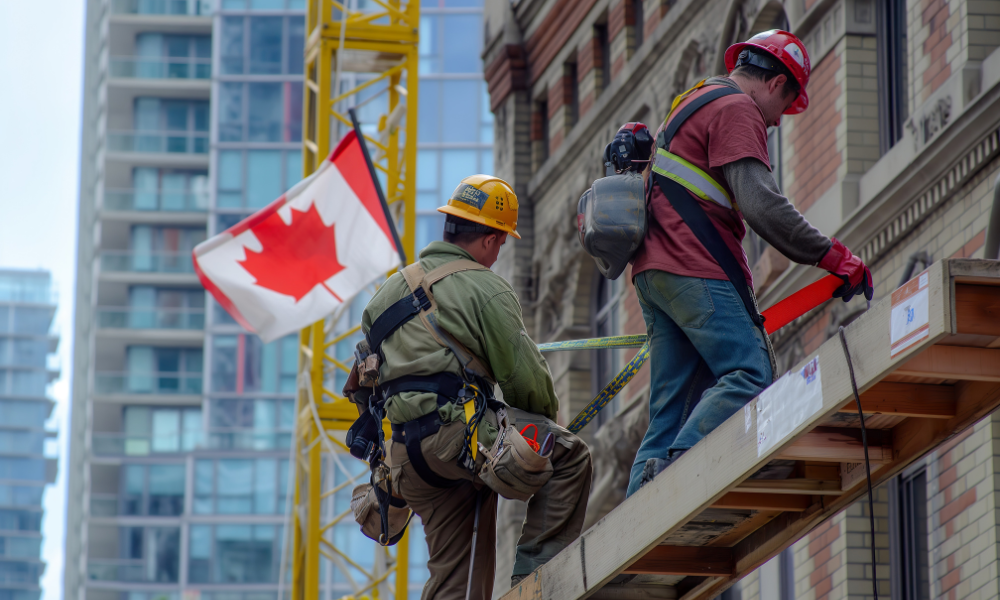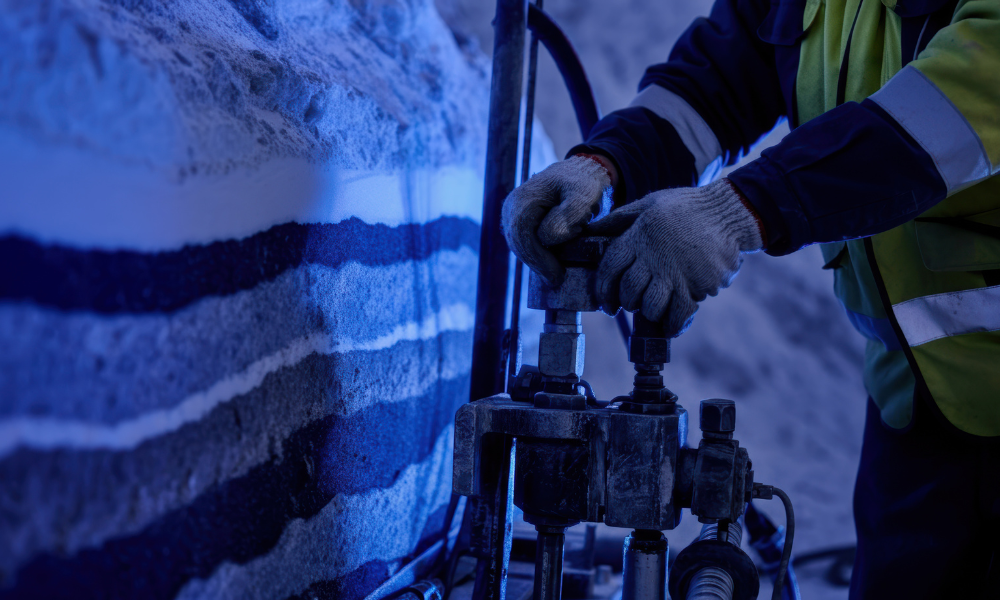How trade tensions are impacting the safety of Canadian workers

The looming threat of U.S. president Donald Trump’s tariffs on Canadian goods is more than just an economic challenge—it’s a direct threat to workplace safety. Across forestry, mining, manufacturing, and oil and gas, industry leaders warn that uncertainty surrounding these tariffs is creating dangerous distractions for workers in high-hazard environments. The result? Increased mental stress, loss of focus, and a heightened risk of workplace incidents.
Distraction in high-risk workplaces
For employees in physically demanding and hazardous industries, staying focused can mean the difference between a routine shift and a life-altering accident. Yet, with the threat of tariffs still on the table, job security concerns are pulling attention away from safety-critical tasks.
Mike Parent is president and CEO of Workplace Safety North, a safety association with many members from the mining and forestry sectors.
“If you were a logging operator, and you know that this threat hangs over you, I mean, it’s a distraction. These are high-hazard sectors. Individuals who work in these sectors need to be at their best focus every day,” Parent warns.
This distraction isn’t just theoretical—it’s already affecting worker morale. In forestry alone, existing tariffs on softwood lumber are squeezing the industry, and an additional 25% tariff could push operating costs to unsustainable levels. “This could just completely decimate the logging sector,” Parent adds.
In the manufacturing sector, the concerns are similar. Wayne Arondus, CEO of the Manufacturing Safety Alliance of BC, echoes the sentiment. “When orders are slower, when there’s talk of recession, workers tend to slow down. Their productivity drops, and so does their focus. If workers are thinking about layoffs or work shortages, that distraction could lead to a split second of not paying attention. Worker safety could be compromised,” he explains.
Mental health and the hidden safety crisis
The stress of economic uncertainty doesn’t just cause momentary lapses in concentration—it contributes to long-term mental health challenges. Anxiety, fatigue, and reduced resilience can lead to burnout, increasing the likelihood of accidents.
“We just came out of the pandemic, and now we’re faced with yet another challenge,” Arondus notes. “There’s fatigue happening, and it’s stacking on top of everything else for workers.”
Parent shares similar concerns, pointing out that workers already facing financial strain could be particularly vulnerable. “You’ve got a mortgage, a car payment, and your family counts on you to be the breadwinner. If you’re coming to work knowing that your industry is already struggling, the stress can be overwhelming,” he says.
With uncertainty hanging over their heads, workers may hesitate to speak up about distractions or mental health struggles. Parent urges employers to be proactive: “It’s a reminder for employers to make sure that when they start their days with their workforce—through tailgate talks or toolbox meetings—they continue to ensure workers can talk about any concerns they may have.”
Cost of cutting
If tariffs do take effect, companies will inevitably look for ways to offset costs. Historically, safety budgets are among the first to face cuts, leading to delayed equipment upgrades, reduced training, and fewer safety resources.
Arondus cautions that this could become a dangerous reality. “Safety is sometimes seen as something that’s done off the side of the desk. When there are potential sales reductions, there’s always that known cutback on costs—whether it be new machinery, upgraded equipment, or safety programs. Some of those things could be delayed or put on hold, which ultimately creates risk for workers,” he says.
This pattern has played out before, particularly in industries like oil and gas, where market fluctuations often dictate spending. But safety leaders in the sector are urging companies to take a long-term view.
“At Energy Safety Canada, our commitment to worker safety remains steadfast, regardless of market conditions,” says Vineeta Maguire, president and CEO of Energy Safety Canada. “History has shown that the energy sector is agile and consistently finds solutions to complex challenges. Prioritizing safety training and workforce development during periods of transition will not only sustain our strong safety track record but also attract and retain the next generation of skilled workers.”
Safety first, regardless of economic conditions
While the final decision on U.S. tariffs is still uncertain, their impact on worker safety is already being felt. Employers must take proactive steps to mitigate the risks, ensuring that economic pressures do not compromise health and safety.
Arondus sums up the challenge ahead: “We’re seeing more volatility, and that’s a drain on workers. We need to create more support for workers long-term because this uncertainty isn’t going away.”
As Canadian industries brace for potential economic turbulence, one thing is clear: workplace safety cannot become a casualty of political and trade disputes. Whether through mental health support, stronger safety programs, or proactive risk management, companies must ensure that workers remain protected—no matter what the markets do.





